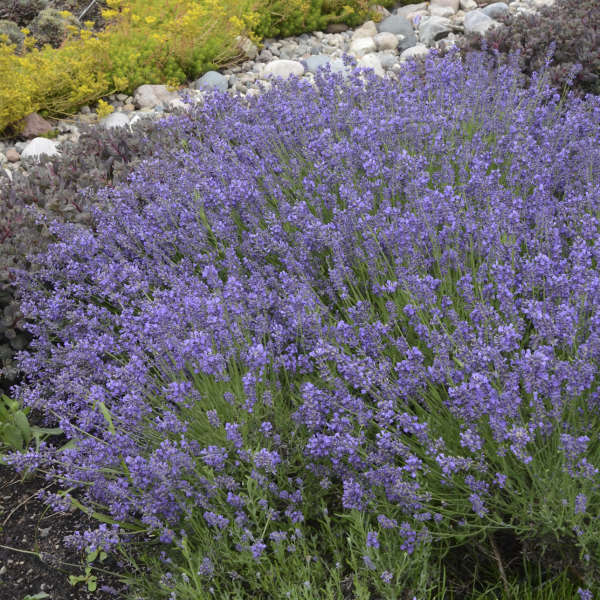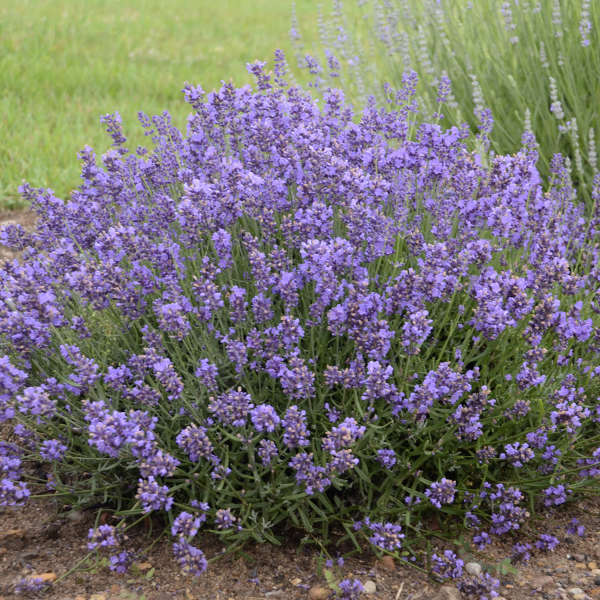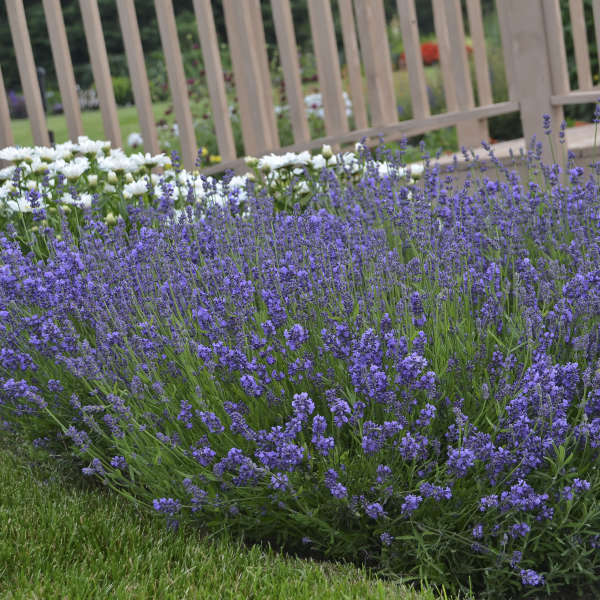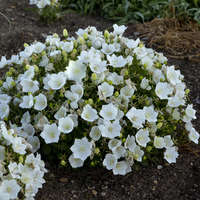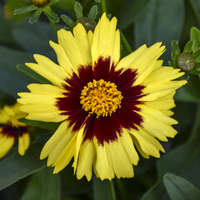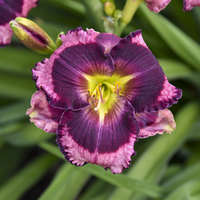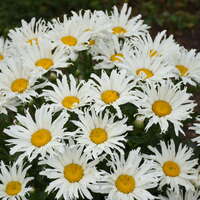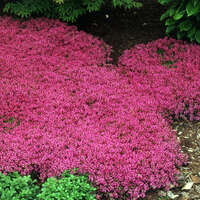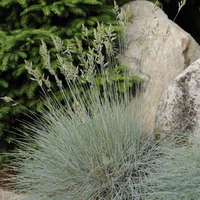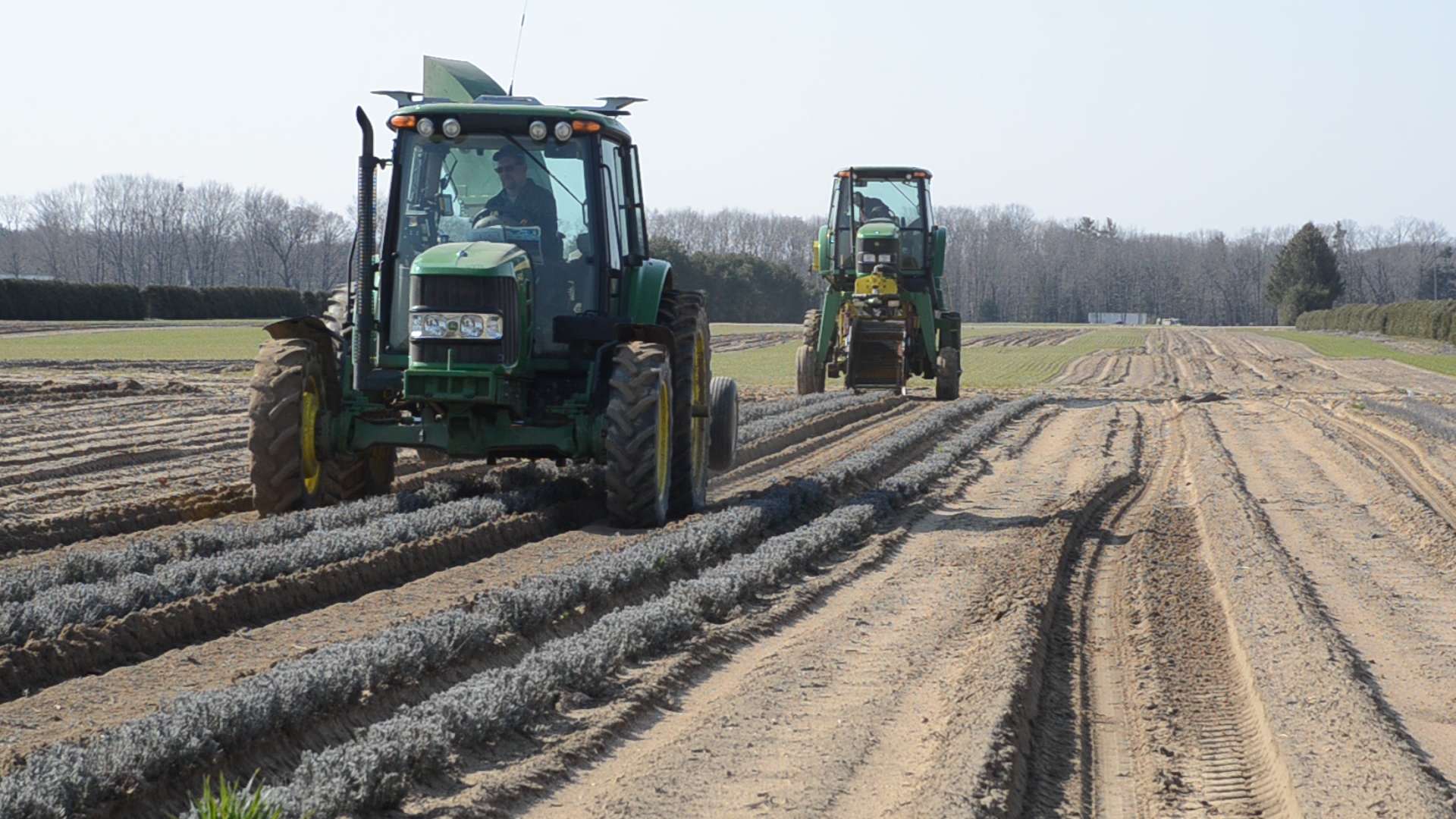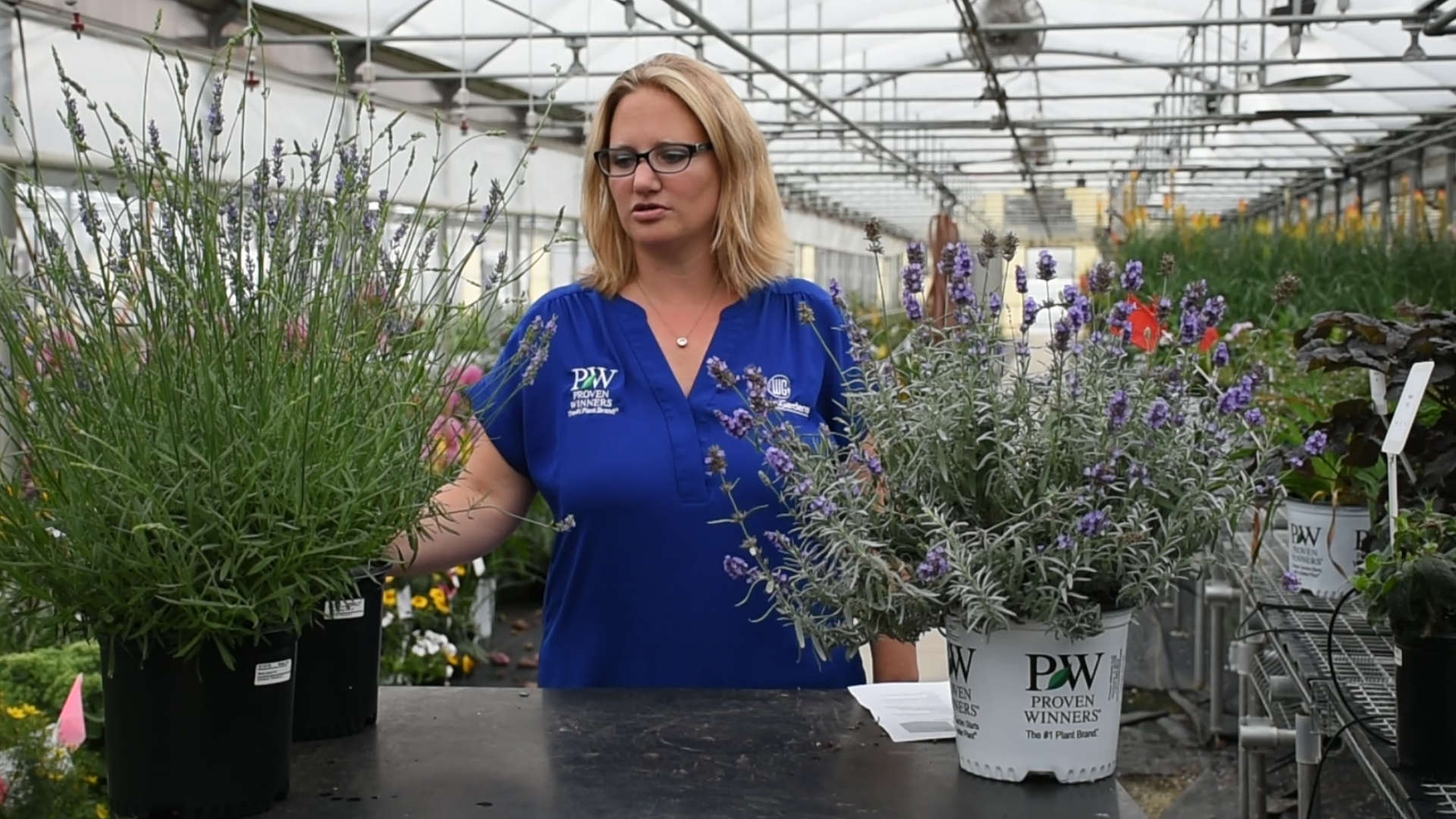Lavandula angustifolia 'Essence Purple'
Common Name: English Lavender
In our trials here at Walters Gardens, we have been trialing a lot of varieties of Lavender because it meets the needs of today’s home gardeners: it is long blooming, deer and rabbit resistant, drought tolerant, and very easy to grow.
‘Essence Purple’ forms a perfect rounded ball-shaped, uniform, dense clump of green, aromatic foliage. In our trials, the plants retained their shape all season without opening up or discoloring.
It starts to bloom about 10 days earlier than standard Lavenders such as ‘Hidcote’, producing a profusion of bright blueberry colored flower spikes for many weeks. The stems are just the right length for cutting for fresh or dried bouquets.
Lavender has been grown for centuries for its intensely fragrant flowers and beautiful appearance. It is a staple item of every sunny garden, and its dried flowers are widely used in potpourris and arrangements.
